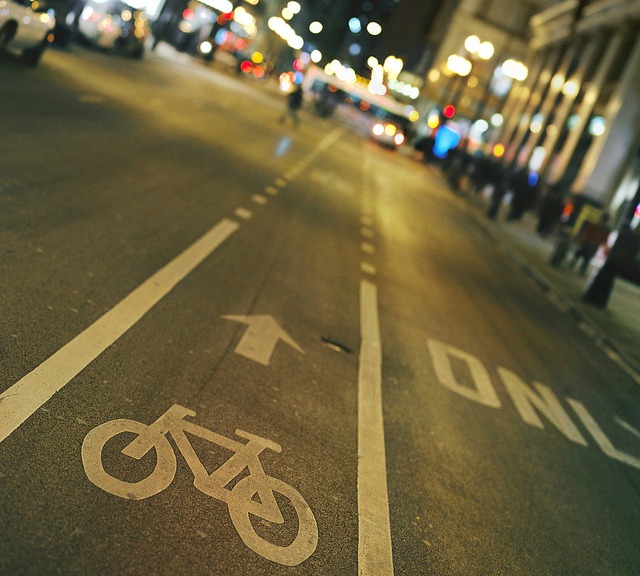Cyclists Shouldn't Always Have To Stop At Stop Signs, New Study Argues
By Stephen Gossett in News on Dec 12, 2016 5:20PM
We’ve long been advocates of the “Idaho stop”—which allows cyclists to safely preserve momentum by treating stop signs at four-way stops as yield signs—and a new study from DePaul University, which urges Illinois cities to consider adopting the rule, is on board, too.
The new report, which was published on Monday by DePaul's Chaddick Institute for Metropolitan Development, studied the stopping behavior 875 cyclists at six Chicago intersections. It determined that one in 25 cyclists makes a complete stop; and a more “common sense option,” as co-author Joseph Schwieterman called the Idaho stop while speaking with Chicagoist, should be considered. The study also advocated that a pilot program that would allow the Idaho stop at some low-traffic signal intersections might also be considered. In the case of a traffic light, a red signal is treated as a stop sign under the Idaho stop.
"In 14 hours of observations throughout the city, in peak and off-peak hours, we found that in large numbers people are already making Idaho stops,” Schwieterman said. “They’re not blowing through [the intersections]. It represents a common-sense option for many bicyclists.”
The report also cites studies that suggest the Idaho stop enhances cycling safety. Injuries declined 14.5 percent in Idaho after the rule was implemented, for instance. And according to a cited 2007 London study, female cyclists are killed at a much higher rate by large trucks than men, likely because women tend to fully obey red lights.
“By going through a red traffic signal before it turns green, men are less likely to be caught in a truck driver’s blind spot,” the new study reports. “Instead, they get in front of the truck before it starts to enter the intersection. This research suggests that some cyclists disobey stop signs or red traffic signals in situations where their personal safety might be at risk otherwise.”
As the study notes, half of the six cycling fatalities between June and September this year were women hit by turning commercial vehicles.
The report also calls for reduced fines for cycling violations and an increase in so-called diversion programs, which would teach safety and allow students to “have fines removed or violations lifted from their record,” Schwieterman said. Fines which typically total around $50, should “align penalties with the realities of biking behavior,” he said.
Such measures should be taken strongly considered because, as the report determined (and cyclists well know), cycling measures remarkably well in terms of speed of travel—which means it will likely only grow as a transportation option for residents. The average bike trip was about 10 minutes shorter than a CTA trip and nearly as fast (though obviously cheaper) than an UberPool trip, the study determined.
[H/T Tribune]
